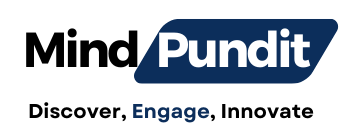
10 Prioritization Tactics for Peak Productivity & Mindful Stress Management
Feeling overwhelmed by a never-ending to-do list? Juggling deadlines and battling work stress? You’re not alone. A recent study by the American Psychological Association revealed that 67% of employees experience stress on the job.
Here are 10 prioritization tactics to help you conquer your workload, boost productivity, and achieve a calmer, more mindful work experience:
1. Embrace the Power of the Prioritization
Not all tasks are urgent. The prioritization matrix, a simple yet effective strategy will help you categorize tasks based on urgency and importance. Urgent tasks require immediate attention, while important tasks contribute to your long-term goals.
Schedule urgent and important tasks first, delegate or reschedule less urgent tasks, and eliminate unimportant ones. You could also get more done by using modern collaboration tools to remotely and efficiently work on the tasks you marked as priorities with other team members.
For example, imagine Liam, a marketing manager with a looming deadline for a social media campaign launch (urgent and important). He also has emails to answer (important but not urgent), brainstorming ideas for a future marketing project (less urgent but important), and organizing his desk (unimportant).
By prioritizing tasks, Liam tackles the social media campaign first. He adds a link to the ads in his digital business card to share with people in his network, schedules email responses for later, adds brainstorming to his long-term project list, and lets go of desk organization for now, focusing on the tasks that truly matter.
2. Break Tasks Into Small Bits
Large, looming tasks can feel daunting. Break down complex projects into smaller, more manageable steps. This makes them seem less intimidating and allows you to focus on one achievable task at a time.
For example, the project scope overwhelms Isabelle, a software developer working on a new app. To combat this, she breaks down the development process into smaller tasks like designing the user interface, coding specific functionalities, and testing each feature individually. She also uses her digital business cards to network remotely to expand her clientele base.
Focusing on these smaller, achievable steps keeps Isabelle motivated and on track for successful app completion.
3. Schedule Time Blocks for Focused Work
Multitasking is a myth! Schedule dedicated time blocks in your calendar for focused work on specific tasks. Turn off notifications, silence your phone, and avoid distractions to maximize your productivity during these focused periods.
For example, Alphan, a freelance full-time copywriter, struggles to stay focused when working from home. To combat distractions, he schedules two-hour blocks in his calendar for writing, puts his phone on silent, and closes unnecessary browser tabs.
This workplace time management tip allows Noah to write quality content and meet his deadlines with less stress.
4. Embrace the Power of “No”
You don’t have to say yes to everything. Learn to politely decline requests that don’t align with your priorities or overload your schedule. Setting boundaries protects your time and reduces unnecessary stress.
For example, feeling overwhelmed, Chloe, a graphic designer, is hesitant to take on a new project from a demanding client. By politely explaining her current workload and suggesting an alternative timeline, Chloe protects her time and avoids the stress of taking on more than she can handle.
5. Schedule Breaks and Embrace Mindfulness
Taking breaks is essential for maintaining focus and reducing stress. Step away from your desk, take a walk, do some stretches, or practice mindful breathing exercises. A refreshed mind is a more productive mind.
The ideal break doesn’t have to be a lengthy one. Even a few minutes can make a significant difference. Here are some effective ways to break away and recharge:
- Mindful Movement: Get your body moving! Take a short walk outside, stretch at your desk, or do light yoga exercises. Physical activity increases blood flow to the brain, boosting energy and focus.
- Mindful Breathing: Practice deep breathing exercises to combat stress and clear your mind. Techniques like alternate nostril or box breathing can effectively calm the nervous system and promote relaxation.
- Engage with Nature: Step outside and connect with the natural world. Even a few minutes spent in a park or garden can significantly reduce stress and improve your mood.
- Disconnect and Recharge: Take a break from technology. Turn off notifications on your phone and computer for a short period to truly disconnect and give your mind a break from the constant digital input.
- Engage in a Quick Hobby: For a few minutes, pursue a passion project. Play a musical instrument, read a few pages of a book, or engage in a creative activity that brings you joy.
For example, feeling decision fatigue after a long meeting, Ethan, a project manager, takes a short walk outside to clear his head. This brief break allows him to return to his tasks with renewed focus and a calmer perspective.
6. Delegate and Outsource
Don’t try to be a superhero. Delegate tasks to colleagues or outsource them to freelancers if possible. Focus on your core strengths and free up time for high-priority tasks. You could also use one of the best HR software to help manage your team and hire the best talent.
For example, feeling overloaded with administrative tasks, Maya, a marketing director, delegates social media scheduling to her assistant. This frees up Maya’s valuable strategic marketing planning and creates time for brainstorming marketing ideas with her team.
7. Reward Yourself
Celebrating your accomplishments, big or small, helps maintain motivation and keeps you focused on your goals. Reward yourself for completing tasks, achieving milestones, or simply making progress.
For example, after finishing a challenging report, Daniel, a financial analyst, treats himself to a coffee break with a friend. This small reward acknowledges his hard work and motivates him to tackle the next task on his list.
8. Maintain a Healthy Work-Life Balance
Disconnect from work outside of office hours. Schedule time for hobbies, exercise, and spending time with loved ones. A healthy work-life balance reduces stress and helps you return to work feeling recharged and ready to tackle new challenges.
Keep tabs on the latest employment trends to stay ahead of the competition and provide the best working environment for your team. Check the feasibility of a trend for your business before implementing it to get results.
For example, coming home after a long day filled with back-to-back meetings, Chloe, a software engineer, sets her work phone on silent and enjoys a family dinner, followed by an evening yoga session.
This disconnection from work allows Chloe to unwind, recharge, and return to the office the next day with a clear mind and renewed energy.
9. Create a Calming Workspace
Your work environment can significantly impact your focus and stress levels. Declutter your workspace, personalize it with calming elements like plants or inspirational quotes, and ensure proper lighting and comfortable seating.
For example, feeling overwhelmed by a cluttered desk, Ethan, a web designer, spends 15 minutes organizing his workspace, filing away documents, and adding a small fish tank for a touch of serenity. This creates a more calming and organized environment that helps Ethan focus on his tasks and reduce his stress.
10. Seek Support When Needed
Don’t be afraid to ask for help. Talk to a colleague, a therapist, or a life coach if you’re feeling overwhelmed or struggling to manage stress. There’s no shame in seeking support; it can make a big difference in your well-being.
For example, feeling constantly stressed and burnt out, Isabelle, a lawyer, schedules an appointment with a therapist. Talking through her challenges and learning coping mechanisms empowers Isabelle to manage her workload more easily and achieve a healthier work-life balance.
Conclusion
Following these 10 prioritization tactics will transform your work approach from constant overwhelm to focused productivity and mindful calmness. So, breathe deep, tackle your to-do list with focus and strategy, and watch your productivity soar. Talk soon!
I’m Kishan Rana, an IT engineer and avid technology enthusiast. Blogging is my passion and I love to write about technological wonders. Being an SEO professional with around 8 years of experience with good leads I provide SEO services to top-level companies around the globe.





